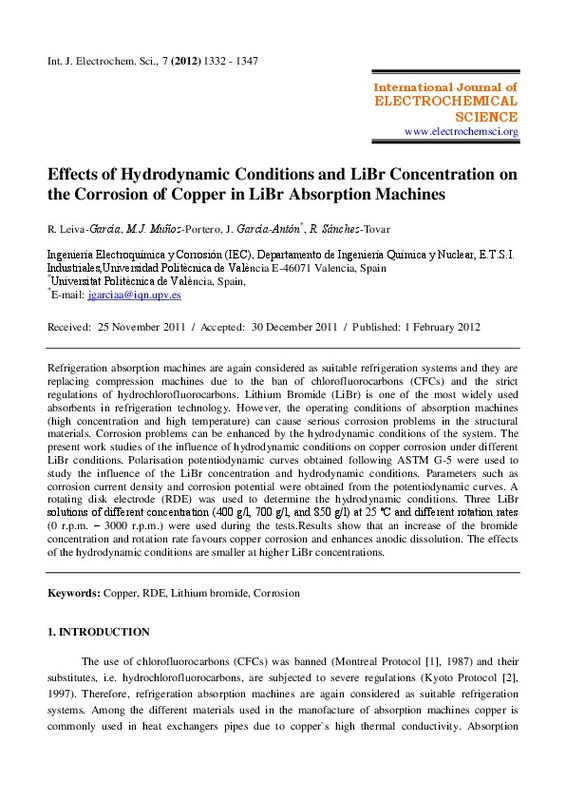JavaScript is disabled for your browser. Some features of this site may not work without it.
Buscar en RiuNet
Listar
Mi cuenta
Estadísticas
Ayuda RiuNet
Admin. UPV
Effects of Hydrodynamic Conditions and LiBr Concentration on the Corrosion of Copper in LiBr Absorption Machines
Mostrar el registro completo del ítem
Leiva García, R.; Muñoz-Portero, M.; Garcia-Anton, J.; Sánchez Tovar, R. (2012). Effects of Hydrodynamic Conditions and LiBr Concentration on the Corrosion of Copper in LiBr Absorption Machines. International Journal of Electrochemical Science. 7(2):1332-1347. http://hdl.handle.net/10251/61162
Por favor, use este identificador para citar o enlazar este ítem: http://hdl.handle.net/10251/61162
Ficheros en el ítem
Metadatos del ítem
| Título: | Effects of Hydrodynamic Conditions and LiBr Concentration on the Corrosion of Copper in LiBr Absorption Machines | |
| Autor: | Leiva García, Rafael | |
| Entidad UPV: |
|
|
| Fecha difusión: |
|
|
| Resumen: |
Refrigeration absorption machines are again considered as suitable refrigeration systems and they are replacing compression machines due to the ban of chlorofluorocarbons (CFCs) and the strict regulations of hydrochlorof ...[+]
|
|
| Palabras clave: |
|
|
| Derechos de uso: | Reserva de todos los derechos | |
| Fuente: |
|
|
| Editorial: |
|
|
| Versión del editor: | http://www.electrochemsci.org/papers/vol7/7021332.pdf | |
| Tipo: |
|







